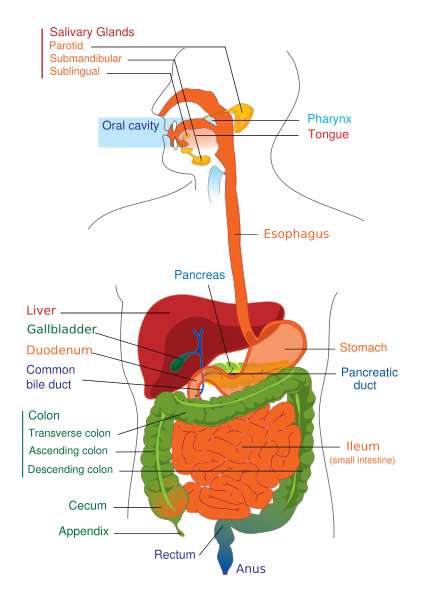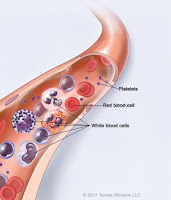How the Digestive System Works
The digestive sysmen is the set of organs responsable for the process of digestion is performed by the transformation of food so that they can be absorbed and used by the body cells.
Gastric juice begins the digestion of ingested proteins. The process ends n the small intestine. There, several enzymes of the pancreatic juice and the intestinal mucosa break down the huge molecules into a much smaller, called aminoacids.
Digestive track:
Mouth:Introduce the food and chew it until it becomes a food blolus.
Esophagus: is a duct extending from the pharynx to the stomach. It has a structure formed by two layersof muscles, which allow the contraction and relaxation in the descending direction of the esophagus and cause the food to advance to the stomach.
Stomach: The stomach is an organ in which food acuumulates. It is the one in charge of doing the chemical transformation since the gastric juices transform the bolus aliment. In the stomach is made the digestion.
Pancreas: It is a gland that secretes hormonesninto the blood to control sugars and facilitates digestion, its secretions are of great importance in the digestions of food.
Liver: is removes toxins and collects vitamins and nutrients. The liver processes, breaks down and balances the blood, creates the nutrients and metabolizes the drugs so that the body can use them without being toxic.
Spleen: Its main function is the destruction of old red blood cells, produce some new ones and manintain a reserve of blood. It is part of the lymhatic system and is the center of activity of the inmune systems.
Small intestine: In the small intestine the nutrients of the already digested foods are absorbed.
Large intestine: It absorbs the vitamins that are released by bacteria that inhabit the colon nad water. It also compacts feces, and soteres fecal matter in the rectum until it is expelled through the anus.
Fun facts
1) We always chew the food because if we did not chew it we wolud be dead by drowning.
2) To be born we have instinct to bite thigs.
3) We can nor get in the water after eating.
4) The liver has more than 500 functions.
























